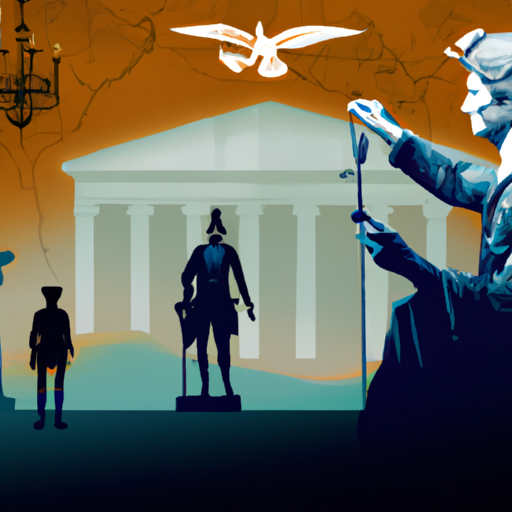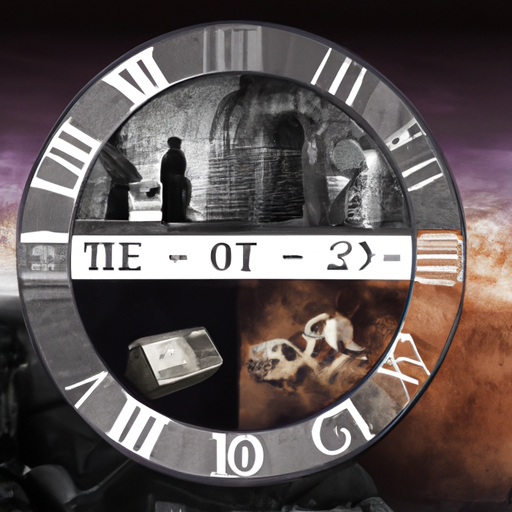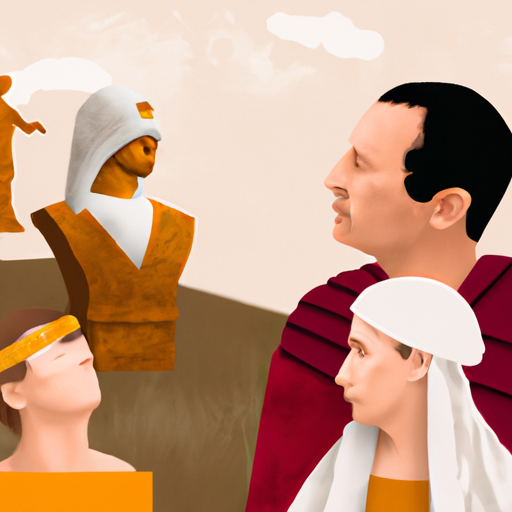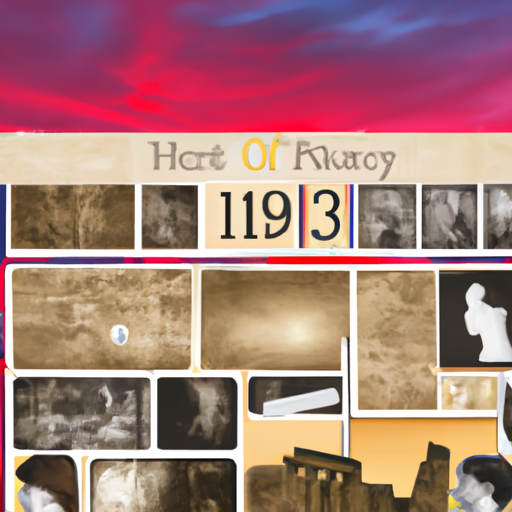A Look into the History of the Deadliest Vikings
For ages, the name Ragnar Lothbrok has conjured up tales of a fierce warrior who reigned terror across Scandinavia and beyond. Shrouded in mystery, his life is one that has captivated historians for centuries. Was he born into a noble family in Sweden or was he descended from Odin himself? No one truly knows.
What is known however, is that Ragnar rose to power quickly and became an unstoppable force in the region. He led numerous raids across Europe, conquering lands and instilling fear in all who opposed him. His most famous feat was slaying King Aella of Northumbria by throwing him into a pit full of snakes – earning him the nickname “Snake-in-the-Eye”.
Today, Ragnar’s legacy lives on through stories of bravery and strength. But despite all we know about his conquests, little is known about the man himself and what drove him to such ruthless domination? As more information comes to light about this remarkable figure, we can only hope that one day we will finally be able to unlock the secrets behind this extraordinary Viking’s past.
Introduction
A mysterious figure shrouded in history, Ragnar Lodbrok is widely considered to be one of the most formidable Vikings to ever live. Tales of his accomplishments in battle have been passed down through generations, with some claiming he was responsible for the burning of Paris in 845 CE. His bravery and strength earned him the title “the scourge of both Franks and Englishmen”. Despite his status as a legendary warrior, no one knows for certain how or when he died – though it’s likely he perished in battle or captivity. Regardless, Ragnar Lodbrok has left an indelible mark on history, remembered as one of the deadliest Vikings to ever set sail.
– The History of Viking Raids and Their Impact on Europe
For centuries, the mystique of Viking raids has captivated many. During the 8th and 9th centuries, Scandinavian warriors known as Vikings embarked on numerous expeditions across Europe. These attacks were sudden and unexpected, leaving little time for defense or escape. The Vikings seized goods such as gold, silver, weapons, and food from their targets.
The repercussions of these raids were far-reaching. Economies and political structures in the areas that were raided underwent substantial changes. In some cases, Viking raiders even established kingdoms in the territories they conquered. This led to increased trade between Scandinavia and other European countries which had a great economic impact.
In addition to economic disruption, Viking raids also had a cultural effect on Europe. As a result of their travels, Vikings brought new ideas and technologies to various regions of Europe including advances in shipbuilding technology which enabled them to travel further distances than before. They also introduced new religious beliefs which influenced many aspects of European life at this time period.
The history of Viking raids is an integral part of understanding our past and present world today as it left lasting marks on many aspects of culture and society throughout Europe during this period in time.
– Exploring the Lives of the Most Notorious Vikings
Venturing into the saga of the most notorious Vikings is an enthralling expedition through the annals of these seafaring warriors. From their plundering raids in Europe to their trading and exploration, the Vikings left a permanent imprint on world history. By analyzing archaeological artifacts, historic documents, and Viking sagas, we can gain insight into the lives of these infamous Vikings. We can uncover their culture, armaments, and convictions. We can also investigate how they interacted with other societies and how they influenced the advancement of Europe. With a deeper knowledge of these renowned marauders, we can acquire a more profound admiration for this era in history.
– Uncovering the Historical Facts Behind Viking Warfare Tactics
The fabled ferocity of Viking warriors has been widely studied by historians, yet their precise battle tactics remain a mystery. How did they take advantage of their environment and weapons to gain the upper hand? To answer this, we must delve into the history of Viking warfare tactics.
Vikings were renowned for their naval prowess, employing an array of vessels from small boats to large warships known as “drakkars”. These allowed them to launch surprise attacks on coastal settlements and raid distant lands with relative ease. Additionally, they could transport troops quickly across water, allowing them to outmaneuver larger armies on land.
On land, Vikings used a combination of shield walls and hit-and-run tactics. Shield walls were created by lining up soldiers shoulder-to-shoulder in a tight formation with shields overlapping one another for protection from arrows and spears. This formation enabled them to withstand enemy charges while remaining mobile on the battlefield. They also employed hit-and-run tactics where small groups would charge an enemy line before retreating back into the safety of their own shield wall.
Vikings utilized a variety of weapons based on the situation at hand including swords, axes, spears and bows and arrows. Swords were typically short and double-edged – ideal for close quarters combat – while axes could be wielded single or double handedly for greater versatility in battle. Spears offered a long reach and ability to pierce armor while bows provided an effective way to harass enemies from afar.
By combining these strategies and weapons together, Vikings achieved great success on both land and sea during medieval times. Though eventually fading from prominence after centuries of conflict, their legacy lives on today through its influence on modern military strategy and tactics.
– Examining the Legacy of the Deadliest Viking Leaders
The Vikings were a fearsome force, leaving an indelible imprint on history. Their legacy has been studied for centuries, and their most formidable leaders have been examined with great scrutiny. This article will delve into the lives of some of the most lethal Viking leaders, examining their military prowess, conquests, and the enduring impact they left behind.
Harald Fairhair was the first king of Norway, reigning from 885 to 930 CE. He is renowned for his strong leadership and unifying Norway into one kingdom. He also earned a reputation as a ruthless warrior, leading numerous campaigns against other Viking groups in Scandinavia. His reign marked the start of an era of Norwegian expansionism that endured until the early 11th century.
Another well-known Viking leader was Ragnar Lodbrok who lived in the late 8th century CE and is believed to be one of the earliest Norse kings. He was known for his ferocity in battle and his exploits were recorded in Old Norse literature. He led several successful raids against England, France, and other parts of Europe during his lifetime; perhaps most famously he spearheaded an attack on Paris in 845 CE which caused thousands of deaths.
The last major Viking leader was Harald Hardrada who reigned over Norway from 1046 to 1066 CE. Harald was a formidable warrior who led victorious campaigns against other Scandinavian kingdoms as well as England. In 1066 CE he invaded England but was defeated by King Harold Godwinson at the Battle of Stamford Bridge before being killed at the Battle of Hastings later that same year; his death signified the end of Viking rule in Europe but his legacy lives on today as one of history’s most notorious warriors.
The influence these deadly Viking leaders had can still be felt today through stories, films, books and even video games that vividly depict their battles and conquests with remarkable precision. They are remembered not only for their martial aptitude but also for their bravery and determination which helped shape European history forevermore.
– Analyzing How Viking History Influenced Modern Culture
The Vikings have left an indelible mark on modern culture, from the stories of Norse gods and heroes to the language that we speak today. Even in exploration, they were among some of the earliest Europeans to set foot in North America. But it is perhaps their societal structure that has had the greatest influence on our current lives. The Viking way of life was highly egalitarian, with women having more rights than most other women living during medieval times – something still seen today in Scandinavian countries where women often take up leadership roles.
Literature and art have also been profoundly impacted by Viking history. Their tales of gods, heroes, and monsters have been handed down through generations, inspiring countless works of literature, poetry, music, and art. Symbols such as axes and helmets are now widely recognized across many industries. And words like “berserk,” “skald,” and “raven” are all derived from Old Norse terms used by the Vikings centuries ago – many of which remain present in Scandinavian languages today.
It is clear that the history of the Vikings has had a significant effect on our lives today; from literature to language usage and exploration to gender equality. By understanding how this ancient people shaped our current culture we can gain valuable insight into our past – one that will continue to inform us for years to come!
conclusion

Mysterious, powerful, and feared, Ragnar Lodbrok is a name that has been passed down through the ages. A legendary figure of Norse lore, his bloody conquests across Scandinavia have made him renowned as one of the most deadly Vikings in history. Despite the passage of time, his legacy remains strong, cementing him as an iconic figure in Viking culture. With countless battles fought and thousands slain in his wake, Ragnar Lodbrok’s impact on history is undeniable.
.
Some questions with answers
Q1. Who was the deadliest Viking?
A1. The most feared Viking of all time was probably Ragnar Lodbrok, a legendary Norse ruler and hero from the 9th century.
Q2. What is Ragnar Lodbrok known for?
A2. Ragnar Lodbrok is mainly remembered for his legendary raids on France and England, as well as his heroic death in a snake pit.
Q3. How did Ragnar Lodbrok die?
A3. According to legend, Ragnar died in a snake pit after being captured by King Aella of Northumbria during one of his raids.
Q4. Is there any historical evidence of Ragnar Lodbrok’s existence?
A4. Although there is no archaeological or written evidence that proves the existence of Ragnar Lodbrok, some historians believe he may have been based on a real person.
Q5. Where can I learn more about the history of Vikings?
A5. There are many books and websites dedicated to the history of Vikings that provide detailed information about their culture, lifestyle, and accomplishments.




